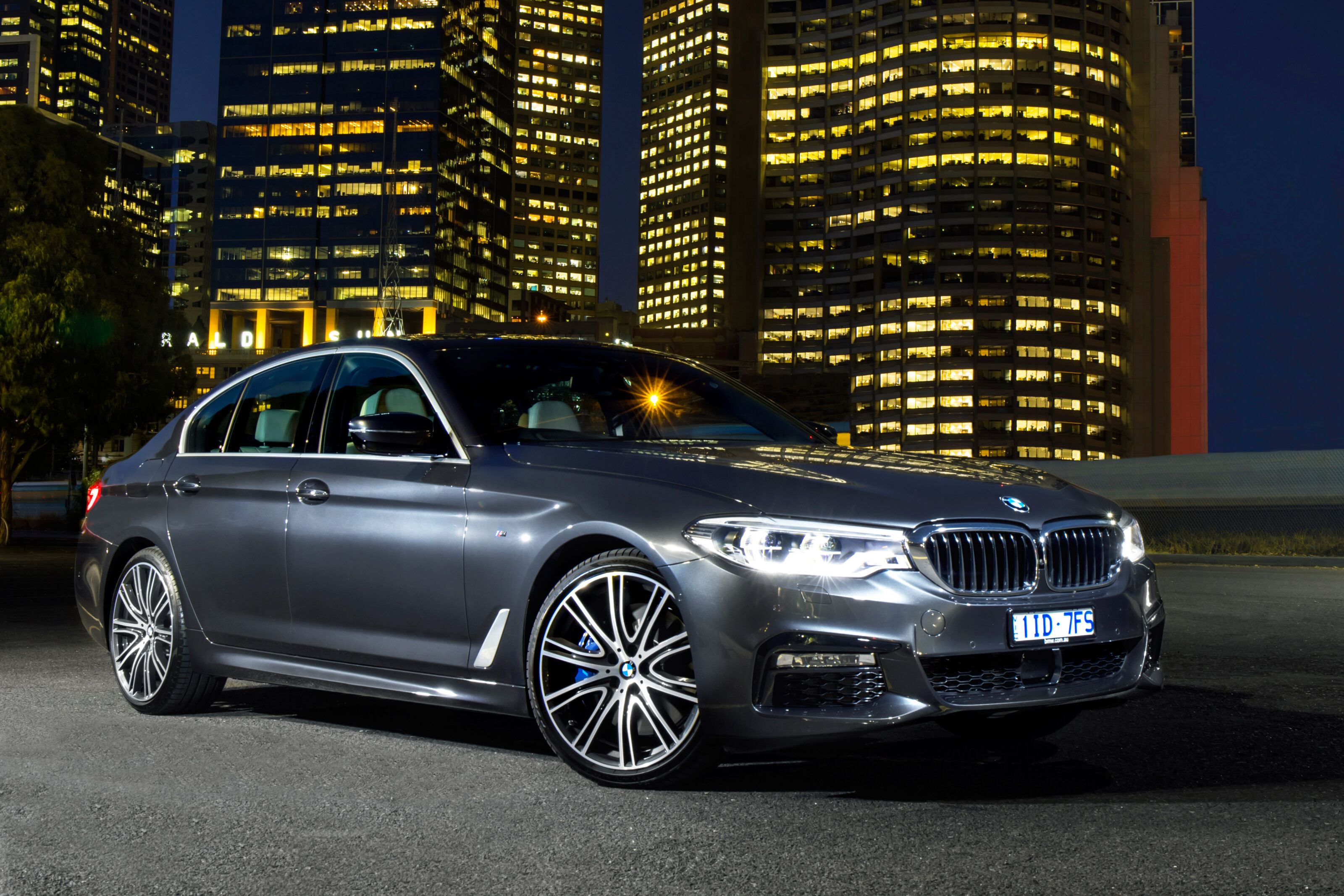
A decade ago the big three of the Australian luxury car landscape – Audi, BMW and Mercedes-Benz – accounted for only four percent of the market. Jump to today, and that margin has doubled to eight percent.
The reason why is pretty clear. Changing Aussie tastes have made premium metal more desirable, and nowhere is this more evident than in the large sedan segment where four-door cars costing anywhere from $80,000 to $150,000 are waiting to woo buyers.
Here are some of the best luxo sedan buys out there, and our tip on which one you should back with your wallet.
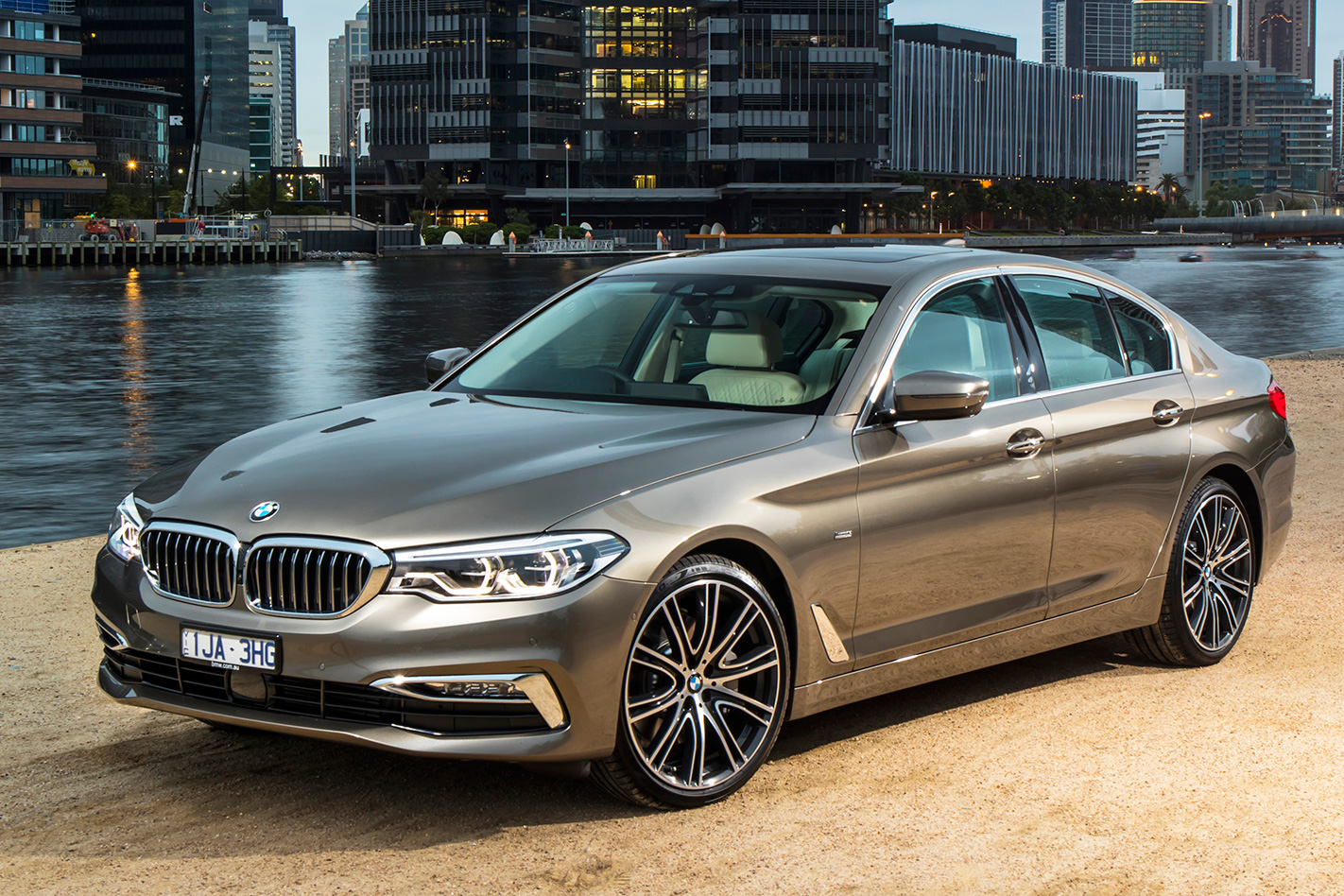
BMW 5 Series Box fresh having just launched on the Australian market in March, the seventh-generation 5 Series arrives as something of a technical tour-de-force. It perhaps doesn’t ride as well as the previous 5 Series, but its combination of a luxurious cabin and cutting-edge electronics – many blended in as driver-assist systems – shine.
The new range starts from $93,900 for the 2.0-litre diesel-engined 520d – it will get a bit cheaper once the price-leading petrol 520i arrives later this year – but we reckon the sweet spot is the 530d ($119,900), powered by a 3.0-litre in-line six-cylinder diesel and sending drive to just the rear wheels.
Surrounding the 5 Series are a pair of forward-looking cameras and six radar-based systems designed to monitor everything happening around the car. It can do things such as read speed signs and feed them into the car’s speed limiter or active cruise control, and can drive by itself, hands-free, for up to 30 seconds right up to the legal speed limit.
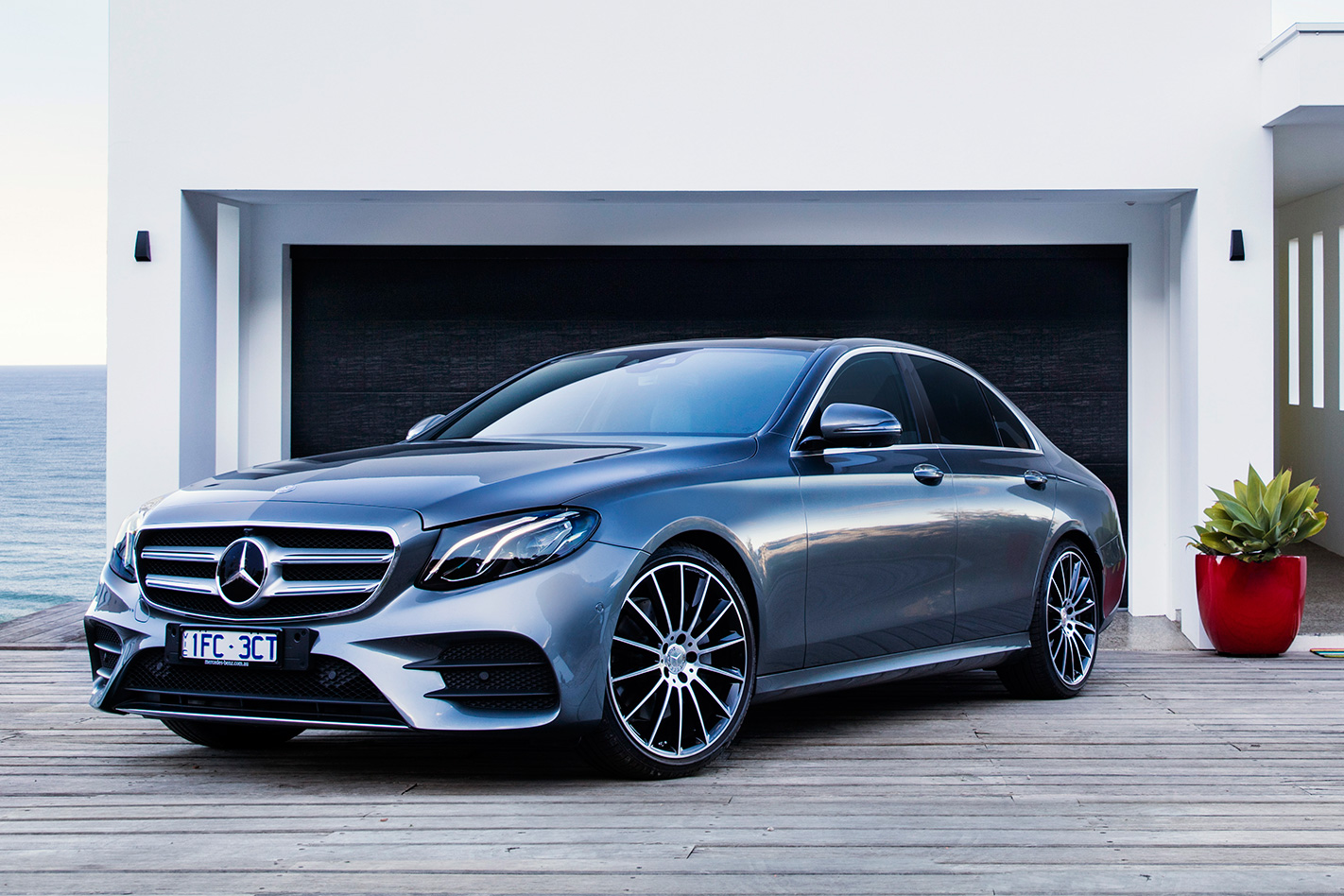
Mercedes-Benz E-Class When it launched in 2016, the all-new E-Class was the most advanced road car on sale in Australia.
The Mercedes-Benz E-Class has revealed itself as one of the most well-rounded performers on the Australian market. It is so good, in fact, that it made it through to the final round of the tough 2017 Wheels Car of the Year award.
Priced from $89,000 for the entry-level E200, the E-Class kicks off with a turbocharged 2.0-litre petrol engine paired with a nine-speed automatic. There’s a new 2.0-litre diesel four-pot that features some clever packaging to make it smaller and lighter, a 3.0-litre in-line six-cylinder diesel, and the two tunes of a powerful twin-turbo petrol V6 in the all-wheel drive E400 and performance-orientated E43.
The E-Class is a bit more expensive compared with the other cars here, but you do get a pleasing level of kit (like the 5 Series is can drive itself for short periods and there’s a huge digital display that spans half the dashboard), and a premium-feel cabin, that goes some way to offset the sticker shock.

Jaguar XF Also new last year, the XF is now into its second generation – and the claws have come out. Lighter and smaller than the car it replaces, and yet with more interior room, it’s a rare example where less does mean more.
What we also liked about the XF is that it has now become a much better car to drive. It’s well-balanced, it communicates with the driver, and the makeover has turned the XF into a much sharper-looking package.
Pricing starts from $89,515 for the entry-level 25t featuring a 2.0-litre four-cylinder engine paired with an eight-speed automatic gearbox. The other engine choices are a 2.0-litre diesel, a supercharged V6 and a diesel V6.
The only downsides to the Jag are a lack of the cutting-edge technology packed into competitors, and the Audi-level cost of some of its options.

Volvo S90 The S90 is the spiritual replacement to the Volvo S80 sedan. Built off an all-new platform shared with the XC90 SUV, it also introduces Volvo’s latest suite of safety innovations.
The S90, priced from $79,900 for a front-drive T5 Momentum fitted with an eight-speed automatic, is elegant inside and out and with a punchy four-cylinder engine that is also respectably fuel-efficient.
All-wheel-drive versions start from $96,900 for the D5 Inscription powered by a 2.0-litre diesel engine. The $98,900 range-topping T6 Inscription uses a turbocharged and supercharged 2.0-litre four-cylinder.
Volvo’s latest luxury flagship doesn’t really move the dynamic game along, but it fights admirably with the big boys while bringing a strong suite of active safety features such as the ability to detect the edge of the road, and automated braking at intersections to the table. It will even tell you where the nearest rest stop is located.

Audi A6 Audi’s fourth-generation A6 may have launched in 2011, but a series of updates along the way – the most significant in 2015 bringing in sharper looks and new drivetrains – means it still holds its own against today’s fresher metal.
The A6 is a restrained-looking saloon with a beautifully crafted interior. We’d probably pass on the uninspiring $80,335 entry-level, front-drive TFSI that comes a bit sparsely equipped with a 1.8-litre seven-speed dual-clutch automatic. Instead, we’d lean towards the $124,885 TDI Bi-turbo featuring a twin-turbo V6 diesel paired with an eight-speed automatic gearbox, yet is frugal enough to slip in under the Luxury Car Tax threshold.
The A6 will be replaced soon, possibly as early as late next year, so you may be able to negotiate hard on price to strike an even better deal.
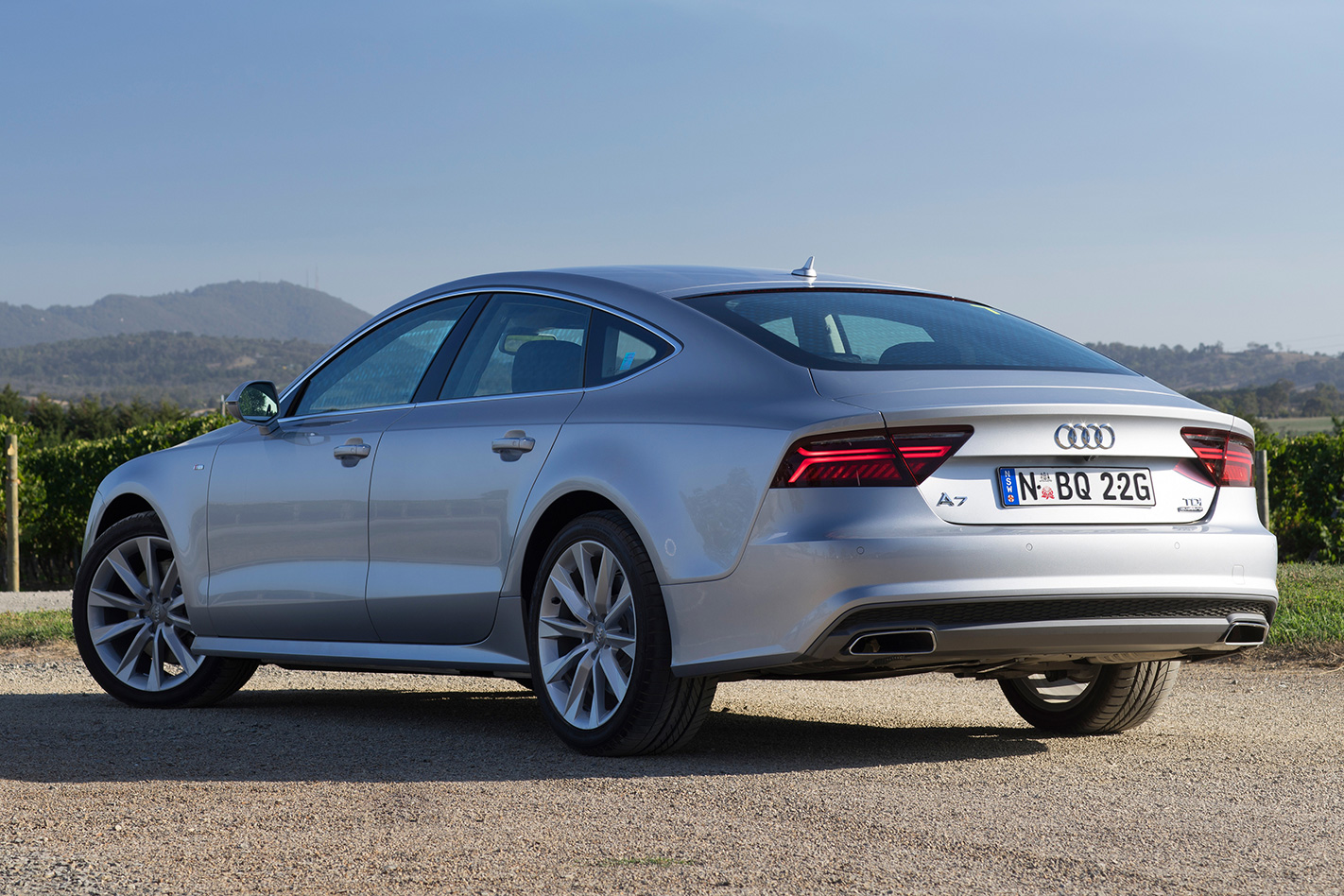
Audi A7 Sportback Audi also has a fastback four-door called the A7 Sportback. The more swept looks of the A7 add $20,000 over the cost of the more traditional sedan, but the more attractive lines go up exponentially compared with it. The A7 comes with the choice of two 3.0-litre V6 diesel engines, and just like with the sedan, it’s the Bi-turbo badge we’d be most interested in.
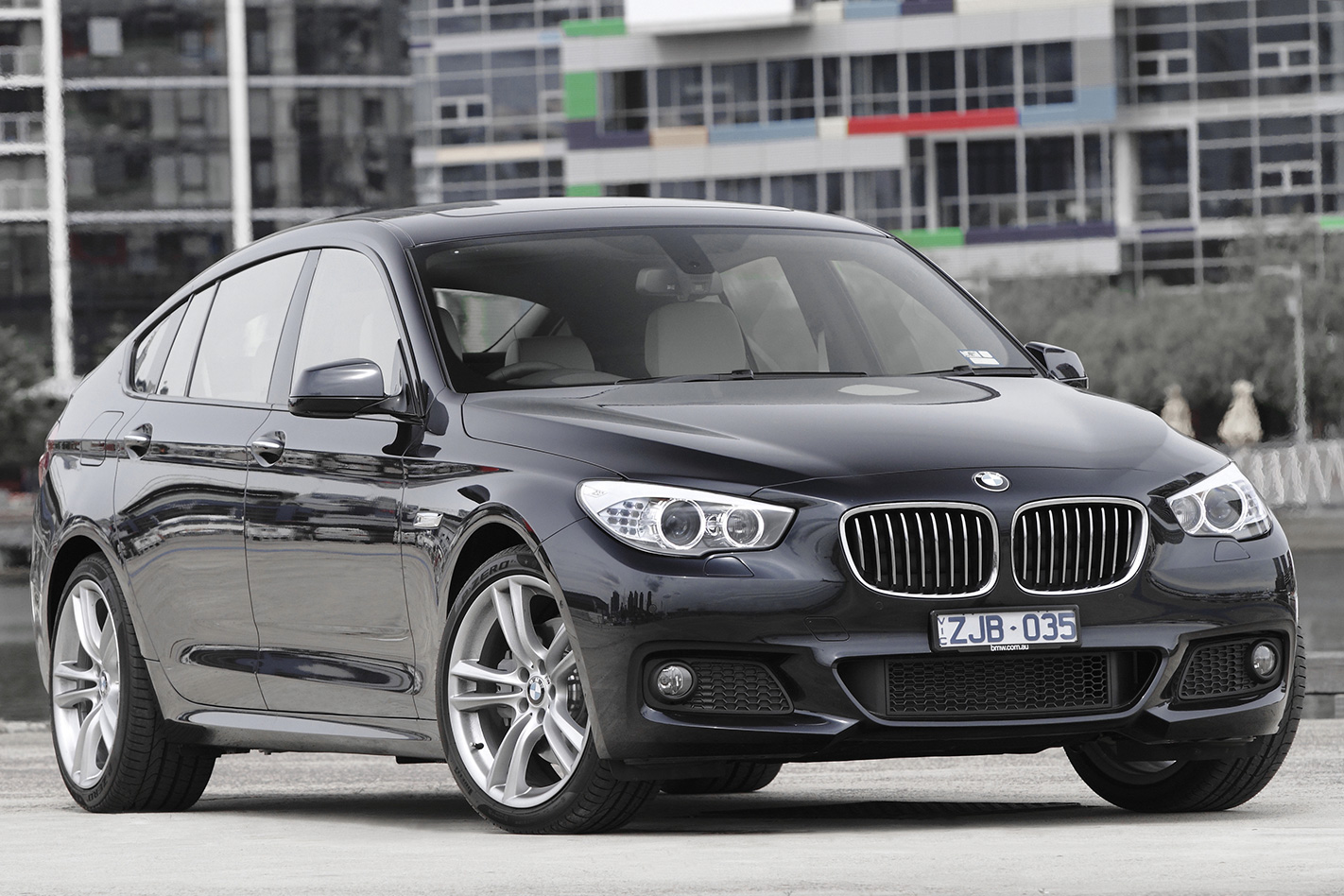
BMW 5 Series GT Like Audi, BMW offers a four-door fastback version of its sedan, priced from a little over the cost of the new 5 Series sedan. Being kind, the 5 Series Gran Turismo looks a little like a sedan that’s been stung on the behind and had an allergic reaction. Its biggest positive, though, is that it has the same wheelbase as the larger 7 Series platform, so rear-seat legroom is generous.

Infiniti Q70 Updated last year as part of a mid-life makeover, the Q70 now features a sportier exterior look (while the interior is largely unchanged) and new technology centred on safety.
Priced from $68,900, it’s better value – especially on the safety side of the ledger – than the model it replaces. In facelifted form, it continues to offer lots of space and equipment and a decent level of interior quality and refinement.
Engine choices are either a 3.7-litre V6, or a 3.5-litre V6 hybrid.
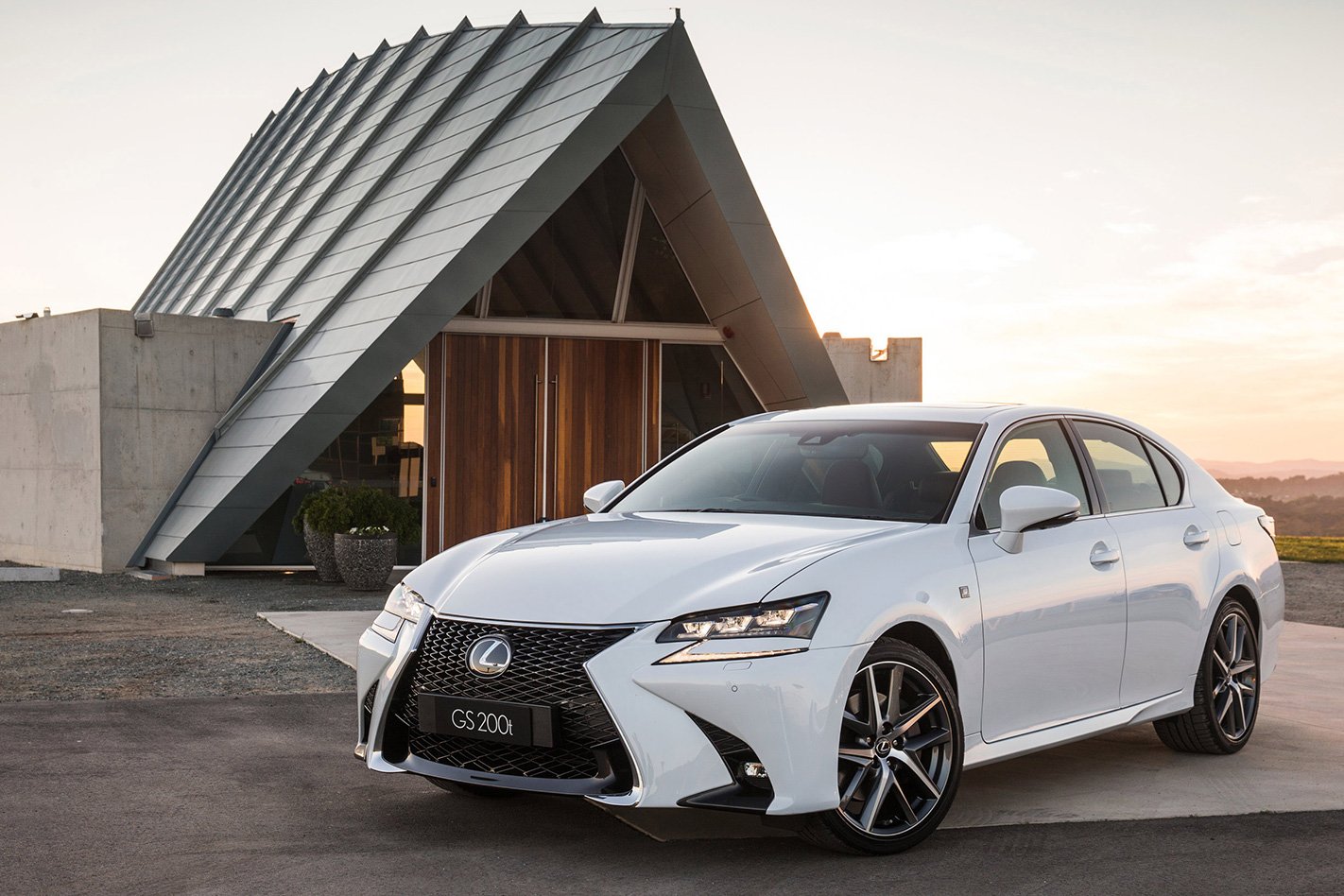
Lexus GS An all-new version, dubbed LS that we’re somewhat excited about arrives in Australia early next year, having just been unveiled at January’s Detroit Motor Show. In the meantime, you should be able to grab a bargain on existing GS stock.
Our pick of the range is the entry-level GS200t, priced from $76,220 and fitted with a turbocharged 2.0-litre petrol engine paired with an eight-speed automatic. It offers a premium limousine experience for a better price than the rest of the GS range, with excellent refinement from its drivetrain and solid road manners.
It’s spacious, well made and has some unexpected flavour in its chassis dynamics, even if it’s not a stand-out class leader.



